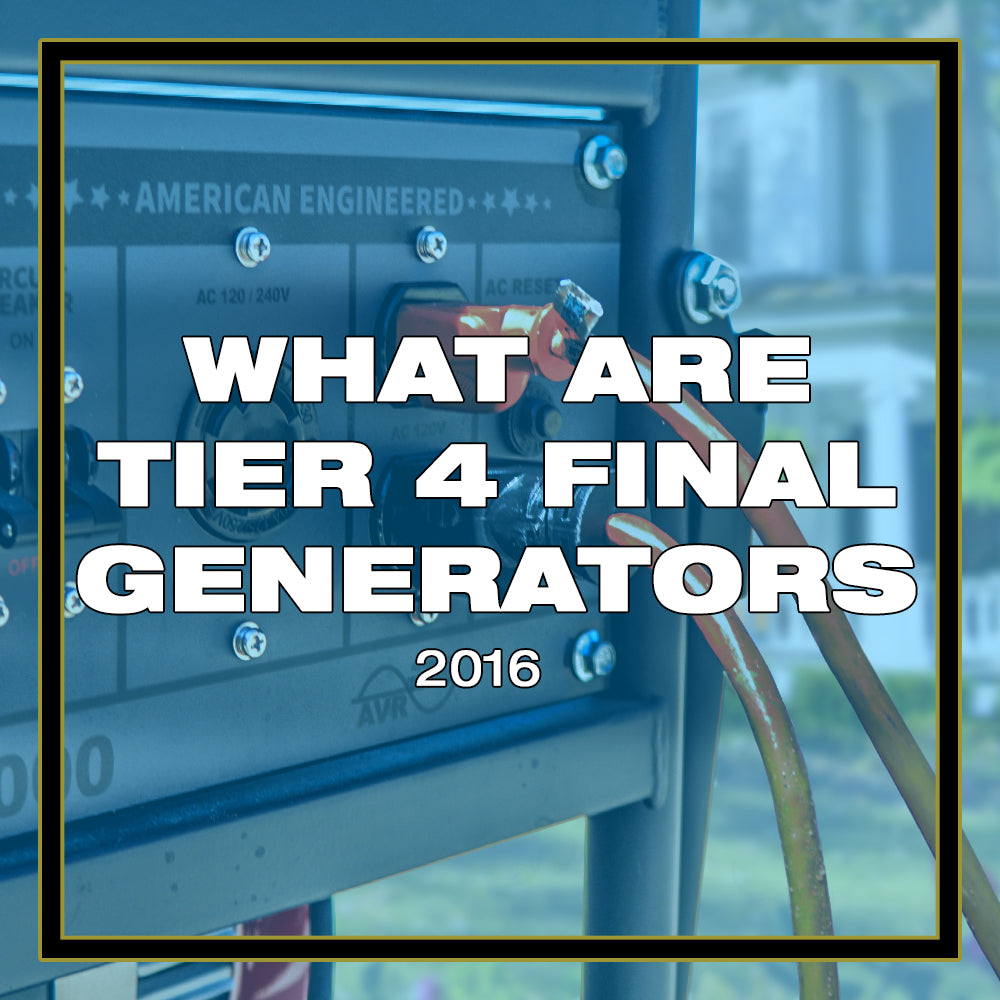What is Tier 4 Final?
Tier 4 final was implemented by the EPA for off road diesel engines in 1996. Standby Generators or Emergency Backup Generators this law was implemented in 2006. The Law was a series of steps to have diesel engine manufacturers reduce the amount of Nitrogen oxides, carbon monoxide, particulate matter, and other greenhouse gases into the earth’s atmosphere.
The goal of the EPA was to reduce 99% of the particulate matter and NO from diesel engines with Tier 4 Final. This goal was set for 2015. There is many provisions and the tier level has changed, updated and varies by the engine size since it was implemented.
The main idea with Tier 4 final is that is significant change in the diesel engine industry, it will greatly reduce emissions and the costs of these engines will rise significantly. Currently today at Tomahawk Generators we are seeing prices for our diesel engines rise between 20-50%!
Where does Tier 4 Final Stand today?
The major update and change we are seeing today is there is a big reduction in the medium to large generator sets with implementation of Tier 4 interim.
See Exhibit 1 on where the engine sizes currently stand according to the EPA law.
Unfortunately, California does not find the EPA law suitable and has adopted its own set of standards which instead are enforced on the end user instead of the manufacture. Also, locally in California there are various air reduction boards which may have even more stringent standards that they will want you to comply with.
See Exhibit 2 for the current Emission standards for all Emergency Standby Generators and Portable Power Generators in California.
Exceptions
There are a few exceptions for the Tier 4 Final Generators. This is primarily Emergency Standby Power. As it is assumed Emergency standby generators will typically run fewer than 300 hours a year their emissions will be not be consider as a major contributing factor to the environment. Thus, depending on the horsepower in many cases Tier 3 will be suitable as an emergency backup generator source. When it comes to even larger generators such as 500kw; Tier 2 is suitable as well as an emergency backup power source.
Conclusions
It’s important to monitor the EPA laws as major changes will happen in 2017 as the country and states will push for more stringent policies. As the 2017 deadline approaches plan in advance to have Tier 4 Final equipment and a stable supplier. For now Emergency Backup Power has a stable supply while portable and rental prime generators will need Tier 4. Keep updated with the EPA, CARB and your local air quality boards and districts










